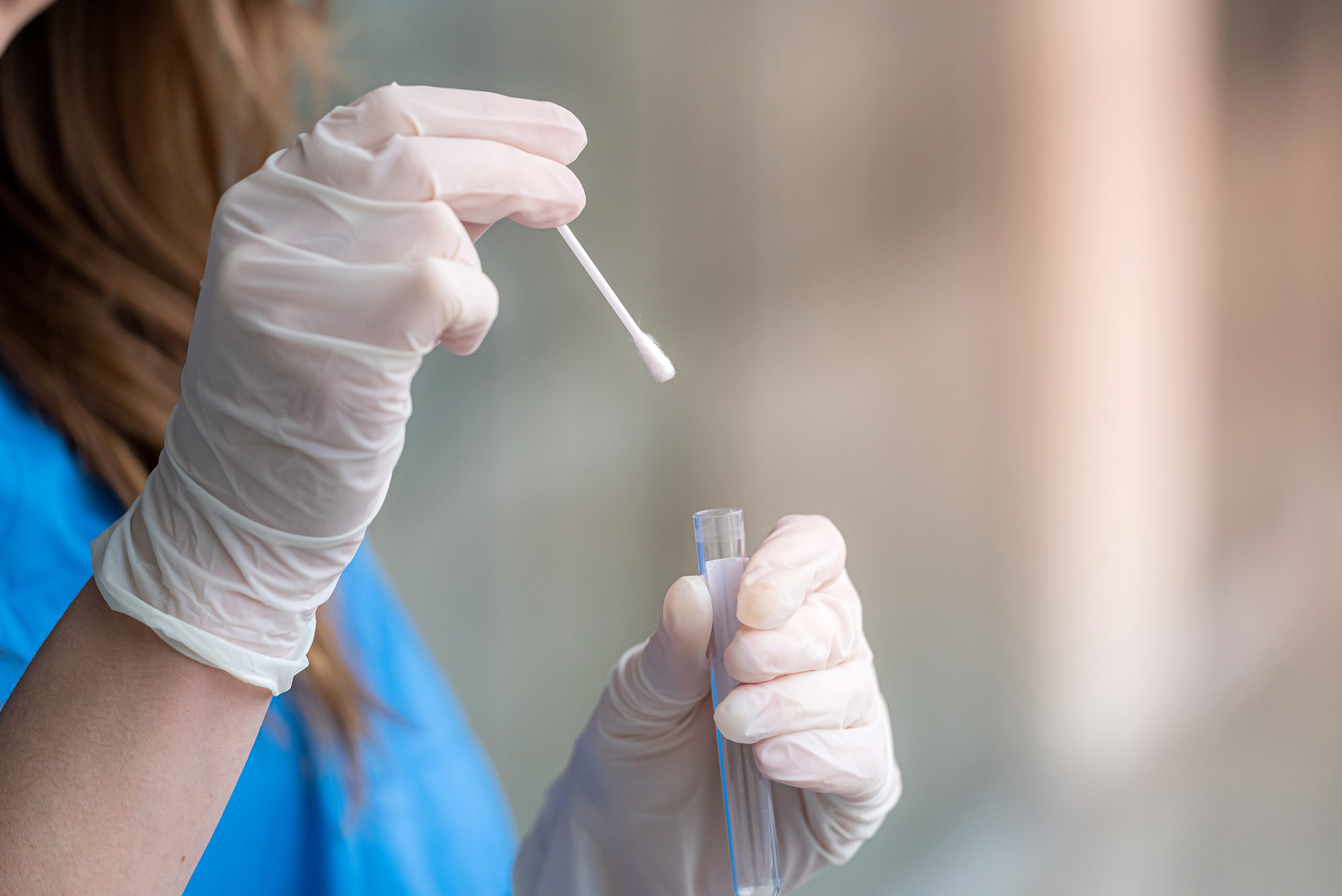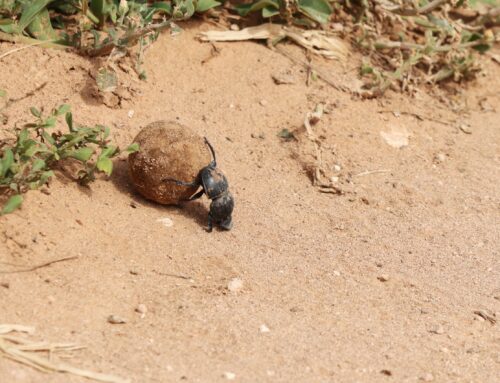I guess these days we´re all sick and tired of doing COVID-19 tests. I know, I know, some guys are very gentle when taking the swab from your nose, you almost feel nothing, or maybe just a light need to sneeze…Others are brutal, really exactly following the instructions they learned, sticking it deep and long, until your tears start running and you don´t know whether to scream, hit them, or just pull away their hand and get the damn thing out of your nose…Throat sampling I won´t even mention. Once I almost puked at the lady trying to get my PCR sample…
It´s quite normal that people don´t like to talk about unpleasant experiences. Same, I guess, is within the field of microbiome research. Everybody´s talking about the gut microbiome and s**t sampling, vagina, mouth, skin…but, wait… what about the places more difficult to reach? Do they actually have any microbiome and how do we get microbes out of there?
I´ve tried here to summarize few interesting points and, without going into very details, so you may still get some sleep tonight. In the end it´s good for your microbiome, you know…
Ever heard of Bronchoalveolar Lavage, or BAL? Well, until few years ago, people believed that our lower airways are sterile, unless we get some nasty lung disease, such as bronchitis or pneumonia.
I have to disappoint you, it´s not true.
By surgically examining lungs of the mice and human cadavers, scientists were able to find some bacteria. Clearly, the same procedures cannot be repeated on living humans and, to confirm the findings, they examined lower airways by BAL. In this procedure, an instrument called bronchoscope, basically a thin tube, is inserted deep into the patient´s lungs (bronchia) under a local anesthesia. Tube of the instrument contains a system for injecting and suctioning of a defined amount of liquid (usually a salt solution), thus “washing” the surrounding Broncho-alveolar tissue and collecting any potential microbes. In this way, they could confirm that the presence of microbes in the lungs was not an artefact or contamination from the upper airways1,2. Exact role of these microbial communities is yet to be determined but change in their structures (dysbiosis) has been linked to chronical lung inflammations and various respiratory syndromes, including COVID-19. 3
Anybody who ever suffered from an urinary tract infection (UTI) knows how nasty it can be and how difficult is to get rid of. After rounds of antibiograms and antibiotics and, after properly destroying all other beneficial microbes in your body, that last one targeted bug in your bladder will eventually drop dead and, you may think, yes, my bladder is finally sterile!
Unfortunately, not true again.
By inserting thin, sterile tubes (catheters) through the urinary channel (urethra) or by puncturing a needle above the pubic area, it is possible to collect samples directly from the bladder, bypassing the genital area and the lower urinary tract. Sequencing of these samples have shown presence of uncultivable bacteria and other microbes, which, although scarce, seem to be crucial for maintaining healthy urinary tract. For example, in case of their dysbiosis, patients are more susceptible to the infections with common pathogenic bacteria such as Clostridium difficile. On the other side, role of urinary microbiome in conditions such as overreactive bladder, incontinence and others, not directly linked to any microbial pathogen, is yet to be established. 4
Fortunately, endoscopic examination of the stomach is nowadays much less risky than some years ago. Among other analysis, this procedure is typically used to test for the presence of Helicobacter pylori, a bacterium linked to stomach ulcers and cancer. Although, role of H. pylori in the stomach microbiome has been recently re-examined 5, the concept of “stomach microbiome” is still not very clear. If we travel further down the small intestine, endoscopy becomes dangerous or impossible to perform. Recent solution to this comes from company Pelican Health, in a form of a pill which travels through the intestine collecting microbiome samples.
Taking a swab from vagina or cervix (lower part of the womb) is normally not a big problem, however, some deeper parts of the female reproductive tract, such as internal womb tissue (endometrium) or the ovaries, are more difficult to examine without contamination by vaginal or cervical microbiota. By using special catheters (transcervical) or thanks to the surgical procedures due to pathological conditions, we learned that deeper part of the female reproductive tract contain microbiomes important for reproductive health and success of the fertility procedures (e.g. IVF).6 In connection to this, another heavily discussed topic in the field is whether human fetus has its own microbiome before birth? 7
Regarding male reproductive microbiome, taking sperm sample or swabs from penis are not complicated, although sampling microbiome of the male urethra may be unpleasant. Testicular microbiome is more difficult to sample and biopsies are typically obtained by a small surgery. These samples have been useful to examine importance of male reproductive microbiome, for example, in sexually transmitted diseases (STDs) and in male fertility.8,9
Similar to lungs and bladder, presence of microorganisms in blood has been long time considered as a sign of infection. Increasing number of evidence shows presence of microorganisms or their genetic material in human blood, without any signs of disease and so, new concept of “healthy” Human Blood Microbiome (HBM) has been born.10
Although connection between gut microbiome and the brain has been well established in the microbiome field, another open question is whether some microbes are able to cross the blood-brain barrier and actually directly enter the brain tissue? This idea came from the analysis of series of images of brain tissues and from sequencing data. Additional evidence are needed to determine whether these are living or dead microorganism or maybe only their parts? 11
Further exciting research is front of us to improve our tools and techniques for “hard-to-sample” microbiomes and to determine their roles in health and disease.
References:
1. Charlson, E. S. et al. Topographical Continuity of Bacterial Populations in the Healthy Human Respiratory Tract. Am J Respir Crit Care Med 184, 957–963 (2011).
2. Carney, S. M. et al. Methods in Lung Microbiome Research. Am J Respir Cell Mol Biol 62, 283–299 (2020).
3. Whiteside, S. A., McGinniss, J. E. & Collman, R. G. The lung microbiome: progress and promise. Journal of Clinical Investigation 131, e150473 (2021).
4. Karstens, L. et al. Community profiling of the urinary microbiota: considerations for low-biomass samples. Nat Rev Urol 15, 735–749 (2018).
5. Pero et al. A Novel View of Human Helicobacter pylori Infections: Interplay between Microbiota and Beta-Defensins. Biomolecules 9, 237 (2019).
6. Schoenmakers, S. & Laven, J. The vaginal microbiome as a tool to predict IVF success. Current Opinion in Obstetrics & Gynecology 32, 169–178 (2020).
7. Willyard, C. Could baby’s first bacteria take root before birth? Nature 553, 264–266 (2018).
8. Molina, N. M. et al. Assessing the testicular sperm microbiome: a low-biomass site with abundant contamination. Reproductive BioMedicine Online 43, 523–531 (2021).
9. Onywera, H., Williamson, A.-L., Ponomarenko, J. & Meiring, T. L. The Penile Microbiota in Uncircumcised and Circumcised Men: Relationships With HIV and Human Papillomavirus Infections and Cervicovaginal Microbiota. Front. Med. 7, 383 (2020).
10. Castillo, D. J., Rifkin, R. F., Cowan, D. A. & Potgieter, M. The Healthy Human Blood Microbiome: Fact or Fiction? Front. Cell. Infect. Microbiol. 9, 148 (2019).
11. Link, C. D. Is There a Brain Microbiome? J Exp Neurosci 16, 263310552110187 (2021).





